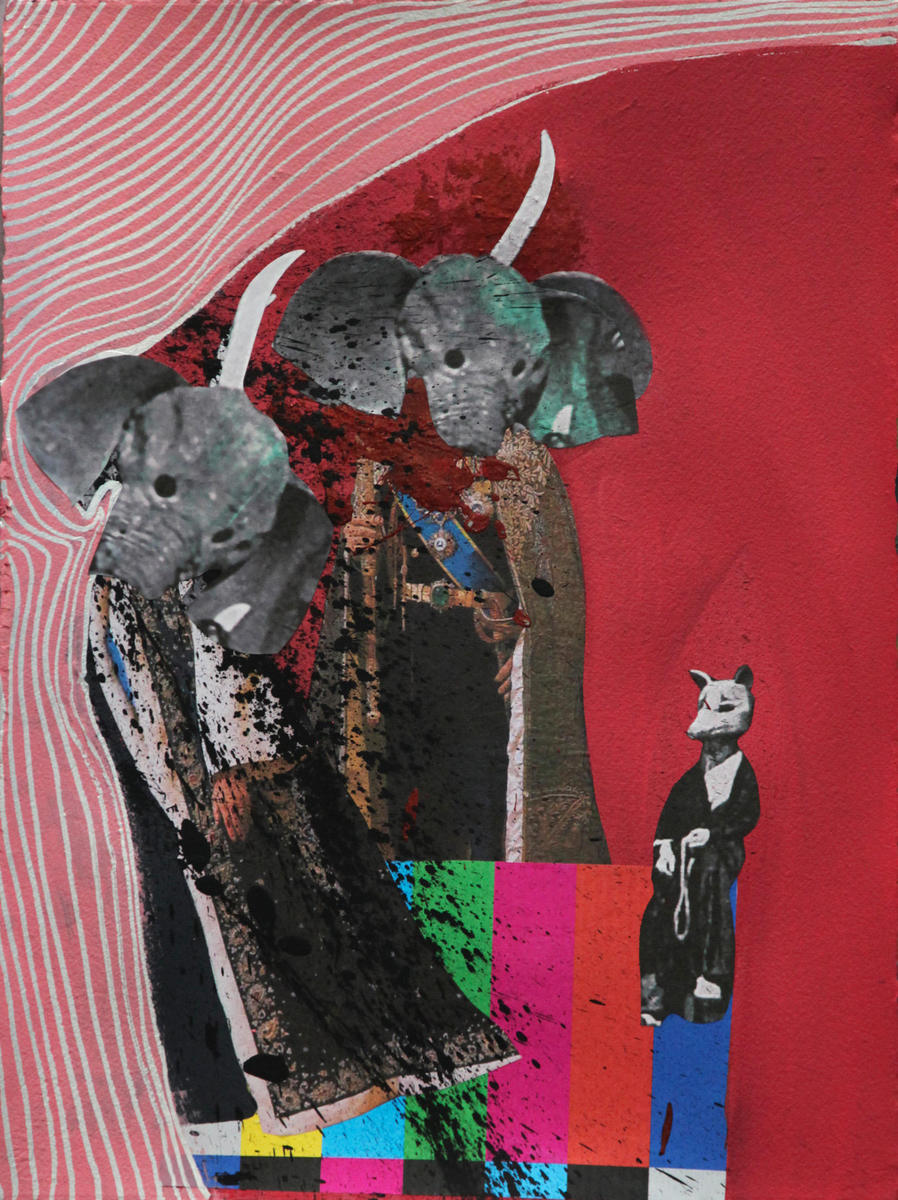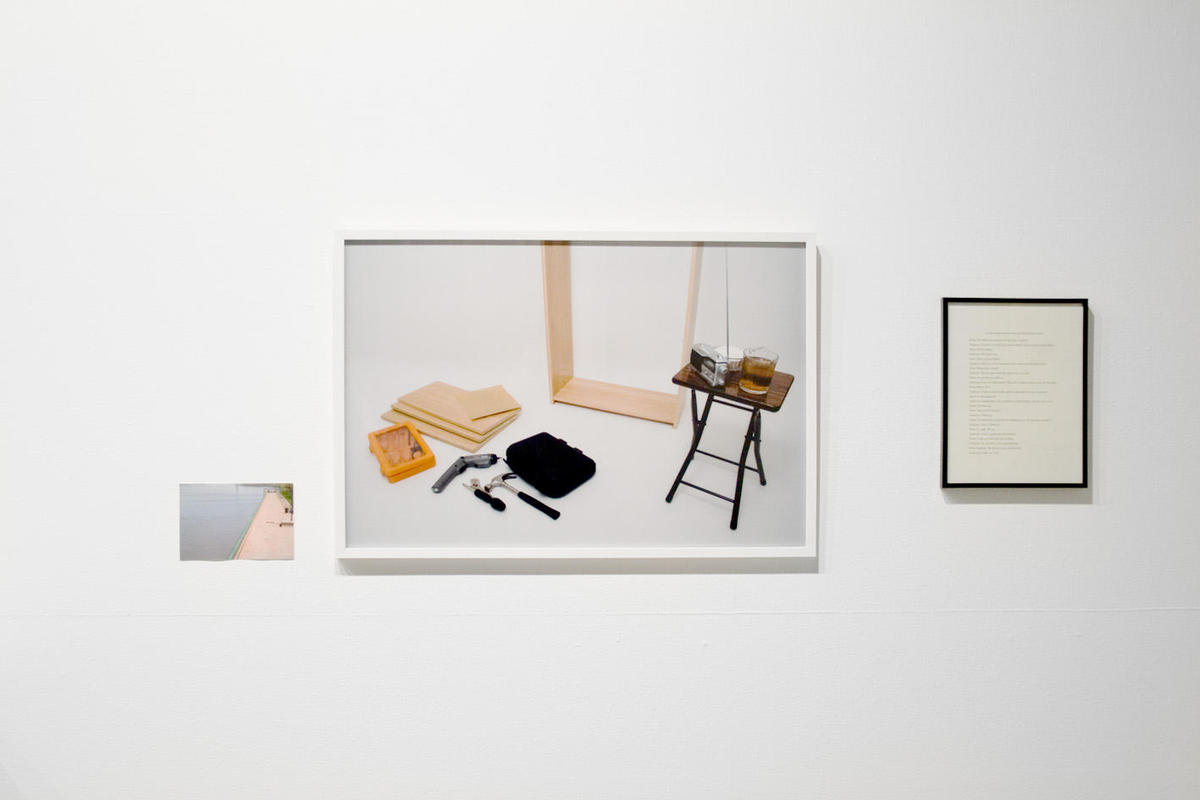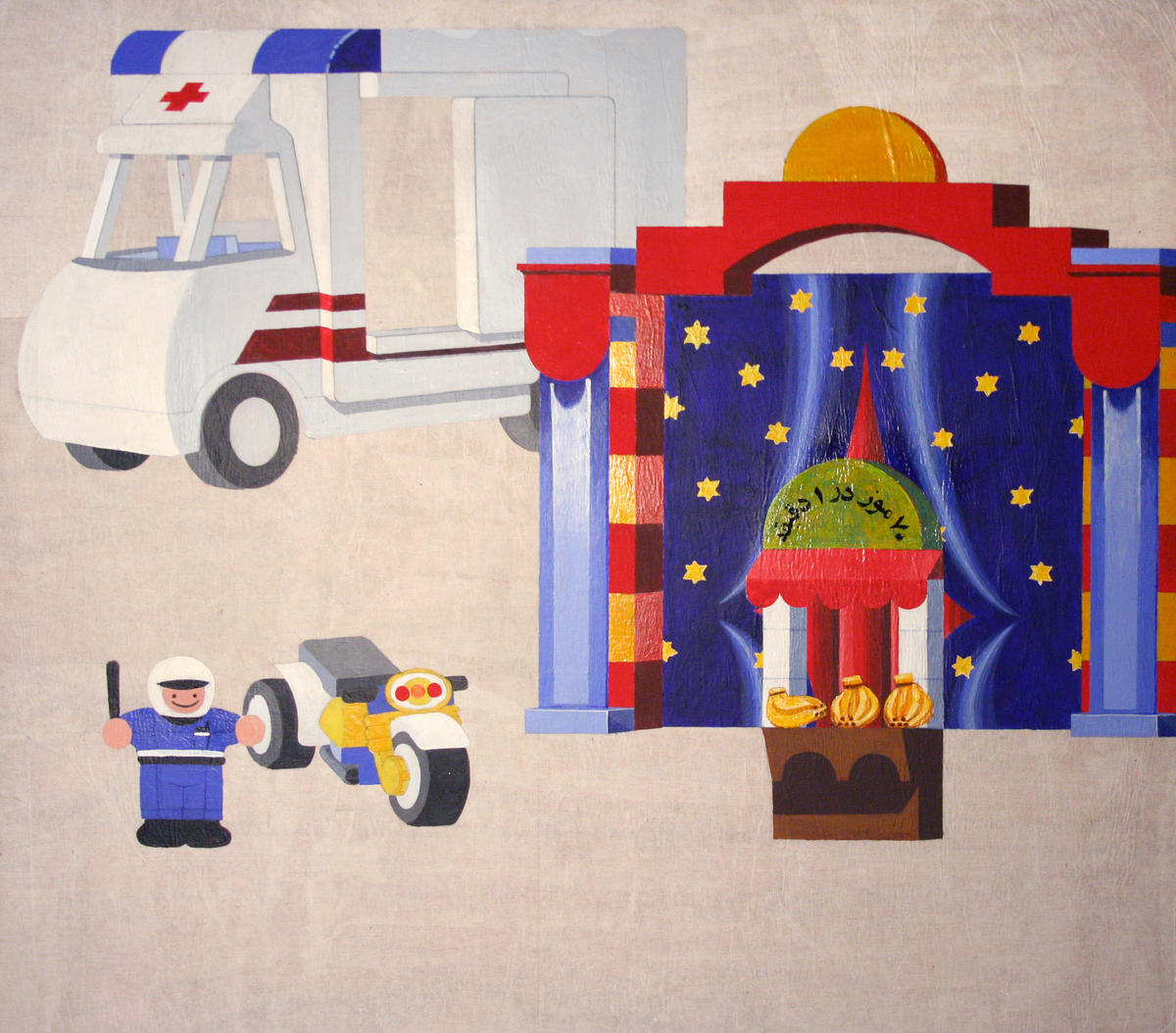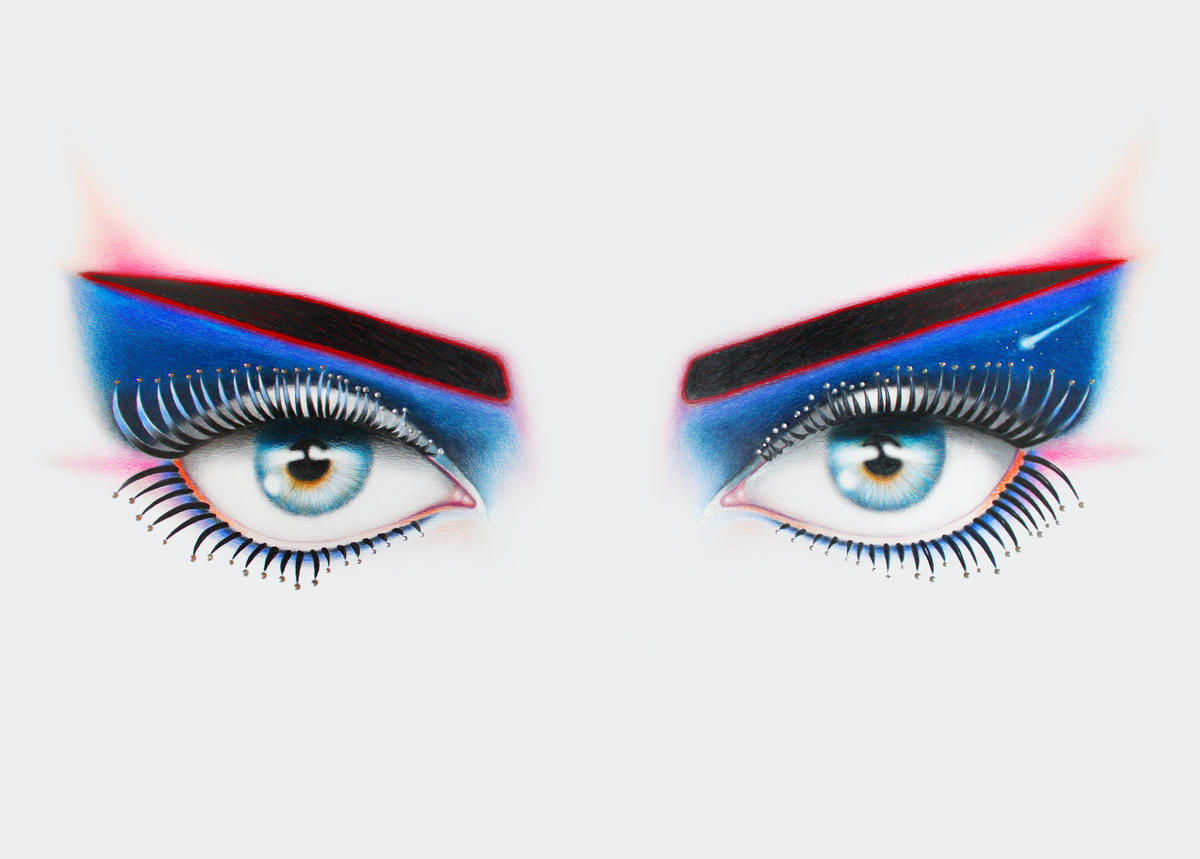London
Phyllida Barlow & Nairy Baghramian
Serpentine Gallery
May 8–June 13, 2010
Conceived as a dialogue between two sculptors, this exhibition will likely push the conversation toward form, space, and narrative. Phyllida Barlow specializes in playfully exuberant pileups of everyday materials, such as cardboard, fabric, paper, glue, paint, plastic, tape, tarpaulins, and more. If her artistic lineage reaches back to Arte Povera, then Nairy Baghramian’s, by contrast, belongs to the sleekness and austerity of modernist furniture and minimalist interior design. Both artists’ works raise intriguing questions about the lives of artworks themselves. While Baghramian’s sculptural and architectural installations sometimes appear as stage sets waiting for a story to begin, Barlow’s works often last no longer than the time in which they are exhibited, as the artist tends to recycle her materials, destroying one piece for the creation of another.

Dubai
Ramin Haerizadeh: Shahr-e-Ghesseh
B21 Gallery
March 15–April 16, 2010
The dark children’s musical Shahr-e-Ghesseh (or “city of tales”) was produced in the years before the Islamic Revolution in Iran, which was when artist Ramin Haerizadeh, then a young boy, first saw it performed. The play tells the morbid tale of an elephant that goes into a small town and breaks his tusk and thus is disfigured and humiliated by other animal townsfolk. Haerizadeh finds in this sinister play an uncanny symbolism and resemblance to recent events in Iran — images of bureaucratic debility and venerated violence. In his signature style of collage and photomanipulation, Haerizadeh adopts scenes from the play where the papier-mâché heads of the actors become poignant symbols of both the removal of the shah and the search for an alternative to the current events in contemporary Iran.

Istanbul
Can Altay & Iman Issa
Rodeo
April 24–May 29, 2010
This double-barreled show at Rodeo will feature Iman Issa’s visually austere yet riddling triptychs alongside a site-specific sculpture by Can Altay, which will weave around the gallery’s central columns like a labyrinth. Linking the two artists together is a shared fascination with cities, subversion, interstitial spaces, and the urban condition. Issa’s earlier photo- and video-based works captured architectural oddities and the performative gestures of a lone figure set against the imposing built environment of a weirdly anonymous metropolis. Her triptychs, however, are far more pensive and interior — a still life of a desk with a typewriter, blood samples, and a plant, for example, placed between a moody shot of a street lamp and a shelf strewn with notebooks. Forging crisp associations between objects and sound elements as well as among images, the series, from 2009, also signifies a major step in the development of the artist’s practice. Altay, originally trained as an architect, creates works based on extensive research into subcultural social phenomena and the improvisational or unsanctioned use of urban space. While he often employs slide shows and animations, here he’ll be creating an environment out of Plexiglas and wood.
Beirut
Etel Adnan & Yto Barrada
Galerie Sfeir-Semler
April 22–June 2010
Etel Adnan was born in Beirut in 1925. A poet, novelist, and playwright who has been experimenting for decades with an accordion-like form of the artist’s book, she will be exhibiting a selection of paintings and works on paper that explore landscapes, abstraction, and feminism. Yto Barrada was born in Paris in 1971. The director of the inimitable Cinémathèque de Tanger, she makes politically engaged (and, at the same time, art-historically evocative) photographs and videos chronicling the changing face and environmental degradation of Tangier. Here, she will be presenting a series of newly created sculptures and installations, in addition to large-scale photographs. By juxtaposing the work of two formidable but very different artists, this cross-generational exhibition promises to tease out some of the subtler aspects of their work by highlighting their common tendencies toward color, poetry, and nature.
Beirut
Emily Jacir: Affiliations
Beirut Art Center
January 28–April 9, 2010
Emily Jacir’s first solo exhibition in Beirut emphasizes the artist in interventionist mode, featuring four works created over the past nine years. For the monumentally moving Where We Come From, Jacir asked Palestinians all over the world, “If I could do anything for you, anywhere in Palestine, what would it be?” Taking advantage of the mobility her US passport afforded her in the early years of the last decade (Jacir would no longer be able to execute the piece today), she took the responses, carried out the requests — including everything from paying a phone bill to going on a date with a girl in East Jerusalem — and documented the process in photographs and videos. For Sexy Semite, Jacir asked Palestinians to place personal ads in the back pages of The Village Voice, seeking Jewish mates who would allow them to return to their homelands under Israeli law. In the sound piece Untitled (servees), Jacir evokes an earlier era when the Damascus Gate in Jerusalem served as a threshold for regional travel. The final work in the exhibition, stazione, consists of documentation for a public intervention that was conceived for last year’s Venice Biennale, exploring the historic links between Venice and the Arab world; it was cancelled at the last minute by the city’s municipal authorities.
Beirut
Walid Sadek: Place At Last
Beirut Art Center
January 28–April 9, 2010
Running at the Beirut Art Center is Walid Sadek’s first solo show. Place at Last features texts, silkscreens, wall works, sculptural objects, and the installations Learning to See Less, Love Is Blind, and Mourning in the Presence of the Corpse. For a fiercely intelligent artist and writer, who is notoriously (and perhaps productively) suspicious of institutionalized art spaces, all of this is an intriguing proposition. Among the many themes Sadek has tackled over the years — in ephemeral gestures, freely distributed publications, textual interventions, and, occasionally, images and installations — are the legacies and consequences of violence, the meaning of lingering strife in periods of political and economic stability, societies resistant to the resumption of healthy or normative living in the aftermath of war, and the poetics of social experience. In all of these works and themes and theoretical inquiries, Sadek continually returns, with great simplicity and tenderness, to the act of seeing and the ramifications of making images (or not).
Beirut
Home Works V: A Forum On Cultural Practices
Various venues
April 22–May 1, 2010
Ten days, five themes, and an onslaught of exhibitions, performances, film and video screenings, artists’ talks, panel discussions, and intensely heated debates. For the fifth edition of the Home Works Forum, Ashkal Alwan has slightly shifted its strategy by putting out an open call for proposals responding to the event’s five areas of interest: “In and Out of Education: What Can We Teach Nowadays?” (proposing an experiential, site-sensitive approach to arts education); “Where is Beirut, Ramallah, Cairo… From Saadiyat Island” (a research project on the implications of Abu Dhabi’s top-down approach to contemporary art and culture); “Sound & Citizenry” (exploring the many intersecting relationships between art, music, revolution, and more); “The Odd Years” (offering a radical re-reading and critical re-assessment of the 1960s); and “Militarism” (looking at the role of strong armies in politics in states such as Syria, Turkey, and Israel). The result is certain to be a far more open, interactive, and participatory forum than ever before, with contributions reaching far beyond the usual suspects.
Amman
Jananne Al-Ani
Darat al Funun
May 11–July 15, 2010
This exhibition is something of a mid-career survey for Jananne Al-Ani, focusing on forms of narration and the relationship between figure and ground (or, more accurately, the disappearance of the body in the vast landscape of the desert). In addition to newly created works in photography and video, the show will include The Visit, a complex, two-part piece from 2005, which consists of “Muse,” a single-channel video projection of a mysterious male figure pacing silently across a patch of land in seven consecutive scenes, and “Echo,” a four-screen video projection of four chatting women, their voices overlapping and escalating into a rumbling din. Reaching back further in time, the show will also include Untitled (Gulf War Work), a piece Al-Ani made in 1991. Drawing on the different uses of photography — from family snapshots and photojournalism to museum-style documentation and carefully staged portraiture — the piece consists of twenty small square images arranged in four rows of five. Ostensibly an illustrated history of the medium, it doubles as a critique of the lack of context and complexity that characterized political debates in the UK around the time of the first Gulf War (particularly when it became clear that British forces would be participating). By reviving this work now, Al-Ani seems to be asking, has anything really changed?

Dubai
Art Dubai 2010
Madinat Jumeirah
March 17–20, 2010
Now in its fourth year, Art Dubai has responded to the global financial downturn and its home emirate’s rollercoaster year by hunkering down in the region. Of this year’s sixty attending galleries, around a quarter are from the Middle East, with the balance an international selection including Grey Noise, Lahore; Galería OMR, Mexico City; and Galería ANIMAL, Santiago. The three artist/curator pairs commissioned for this year’s Abraaj Capital Art Prize — Kader Attia with curator Laurie Ann Farrell; Hala Elkoussy with Jelle Bouwhuis; and Marwan Sahmarani with Mahita El Bacha Urieta — present their finished installations; and the Global Art Forum, the largest talkshop in the MENASA (Middle East–North Africa–South Asia) region, returns to its tent on the beach. The fair has revamped the forum this year, taking on subjects such as the future of the art school and a series of “modernist moments” through conversations with artists, curators, museum directors, and collectors. The forum will be documented with a new mapping project presided over by a team of writers and artists — Shumon Basar, Haig Aivazian, and Naeem Mohaieman.
This year, Bidoun Projects will curate all noncommercial programming at Art Dubai. A group exhibition focuses on new and expanded formalist practice and includes cardboard sculptures by Hazem El Mestikawy; Safety Zoom, a dynamic wall installation by Mahmoud Khaled; and a set of mixed-media triptychs by Iman Issa. We have commissioned major new works from Vartan Avakian and Ebtisam Abdulaziz, and are also commissioning artists to design ice sculptures and give tours of the fair. The basement Art Park returns, with four video programs, curated by Bidoun Projects plus Aram Moshayedi, Masoud Amralla Al Ali, and the team of Ozge Ersoy and Sohrab Mohebbi. Bidoun will also officially launch our year-long collaboration with UbuWeb with a series of screenings and talks featuring poet and UbuWeb founder Kenneth Goldsmith and filmmakers Peggy Ahwesh and Hamlet Hovsepian. We will also be presenting the latest version of the Bidoun Library.
Dubai
Al Bastakiya Art Fair
XVA Gallery and other venues, Bastakiya
March 15–21, 2010
Timed to coincide with Art Dubai, Dubai’s only fringe art fair will focus this year on contemporary Middle Eastern art through a combination of curated national pavilions, including Iraq, curated by Asmaa Al-Shabibi; Iran, curated by Rose Issa; and Lebanon, curated by Samera Zahed. It will also feature exhibitions by Dubai- and Sharjah-based galleries, and installations in public outdoor areas around the wind-tower stone houses in Bastakiya, Dubai’s atmospheric heritage quarter by the Creek. Now in its fourth year, and once again organized by XVA gallery, BAF aims to promote independent practices and to foster an international conversation between members of the art community in Dubai and abroad.

Dubai
Eye Love You: New Works by Shirin Aliabadi
The Third Line
March 10–April 22, 2010
Shirin Aliabadi’s first solo exhibition in Dubai takes on the bizarre aesthetics of wedding culture. In a series of pencil drawings, elaborately made-up eyes play on the drama and grandiose expectations of the marriage ceremony and the artificial body enhancement that can go along with it. The exhibition also includes a poem written by the artist, about a young girl bored into doodling about beauty, fame, material gain, and, of course, love.
Dubai
Abbas Akhavan: MAPPING
The Third Line
May 5–June 17, 2010
Visitors to Abbas Akhavan’s first solo exhibition in Dubai will be able to take home a “piece of Dubai.” The Vancouver-based artist will create a series of maps that combine aerial shots of Dubai and neighboring regions with mythical mapping elements from the Middle Ages, focusing on Dubai’s infamous man-made islands and architectural icons. Akhavan plans to offer pieces of the map for sale — a reminder of the economy’s inevitable influence on the art market and its questionable ability to sustain itself through the crunch times.
Cairo
On how to appear invisible
Townhouse Gallery of Contemporary Art
May 2010
The exhibition on how to appear invisible takes Pier Paolo Pasolini’s call for a “state of emergency” in the 1963 film La Rabbia (Rage) as its point of departure. In the film, a collaboration between Pasolini and Giovanni Guareschi, Pasolini despairs at the state of apathy around him, calling upon poets and artists to rise up and disrupt the status quo. This project, curated by Sarah Rifky in collaboration with Reloading Images NYRT, comprises an exhibition, choir, party, series of nonevents, performances, reproduced papers, readings, and talks — making for a return to the more casual, everyday, personal, and introspective approach to art and performative practices. The exhibition portion will feature acts, works, questions, stories, and interruptions by Dora Garcia (SP), Carey Young (UK), Sharon Hayes (US), Ahmed Sabry (EG), Mohamed Nabil (EG), Hassan Khan (EG), Ceal Floyer (G/UK), Dan Perjovschi (RO), Johanna Billing (SE), Johan Svensson (SE), Nikos Arvanitis (G/GR), Sarah Pierce (UK/US), Ana Bezelga (PT), Tischa Mukarji (FR/IN), and the Complaints Choir (FIN/EG). ‘On how to appear invisible’ is an ongoing project to be launched at the Townhouse Gallery of Contemporary Art in Cairo. It will connect to Home Works V, Beirut, and On Rage, curated by Valerie Smith at the House of World Cultures, Berlin.